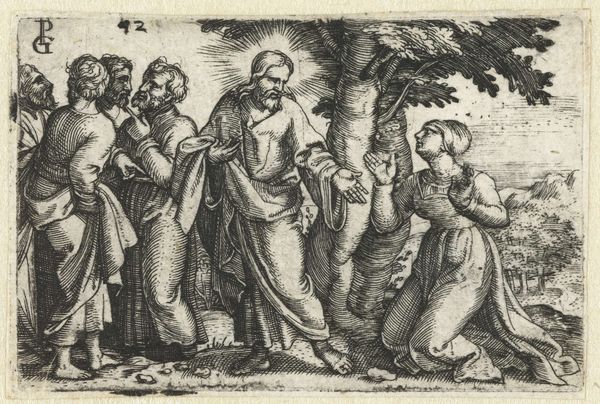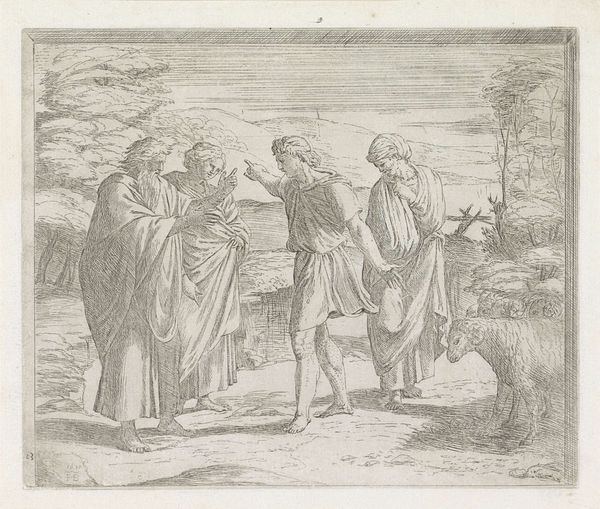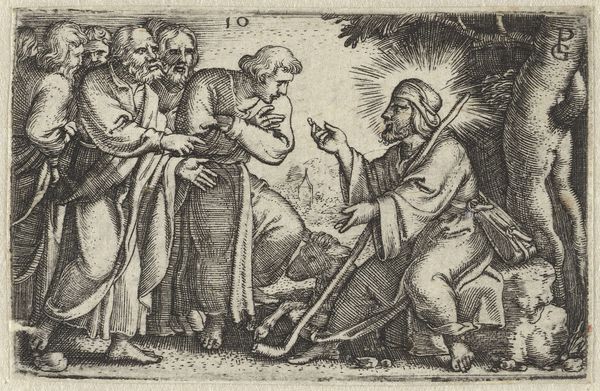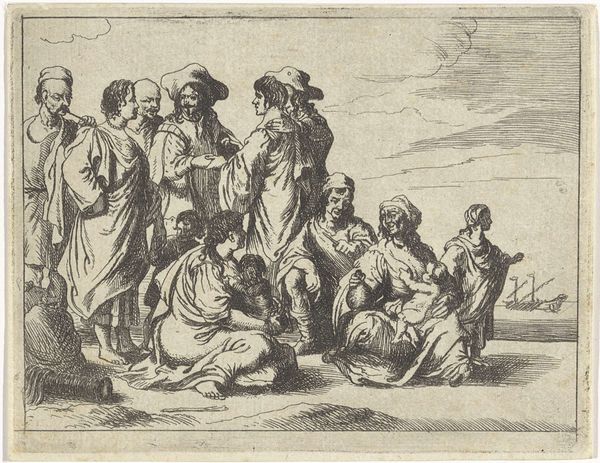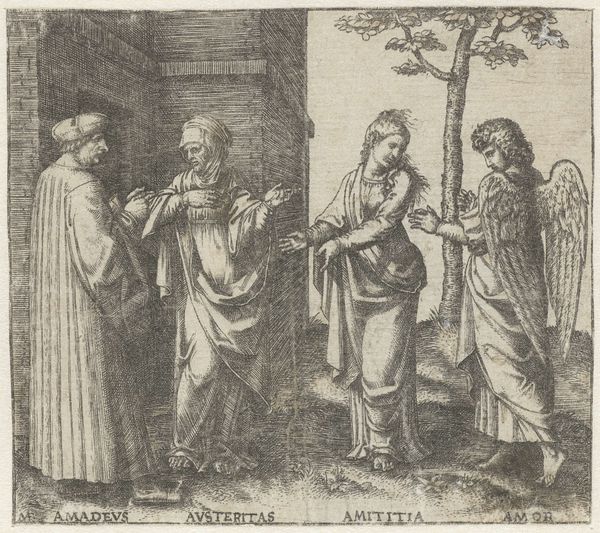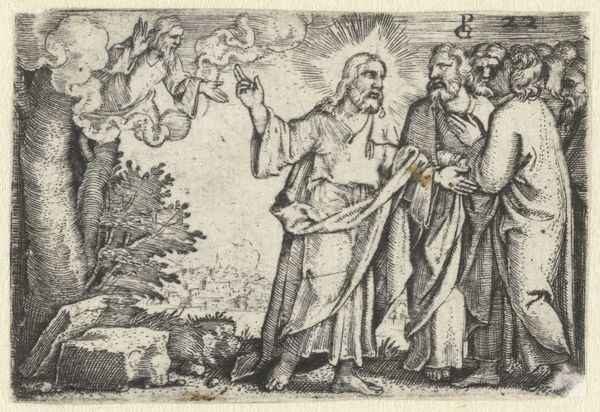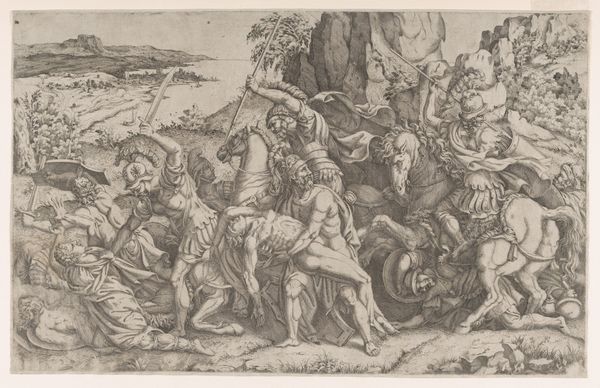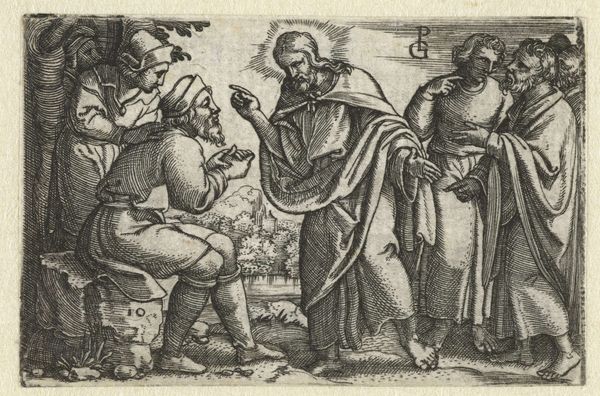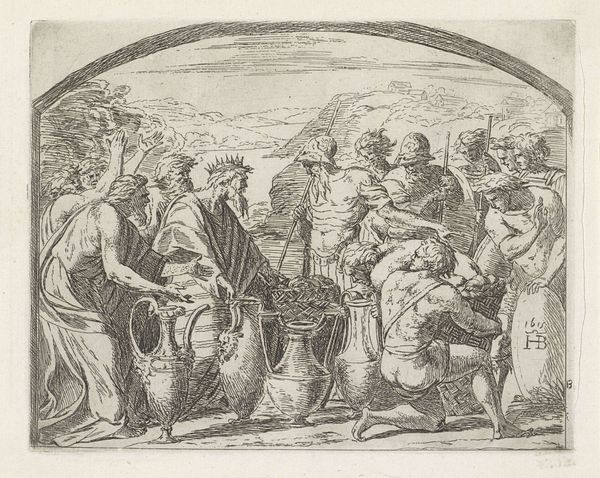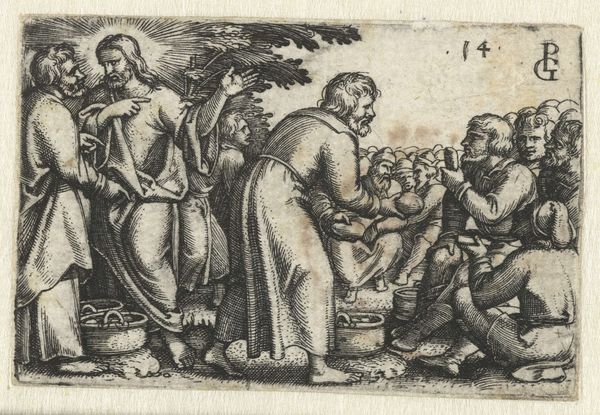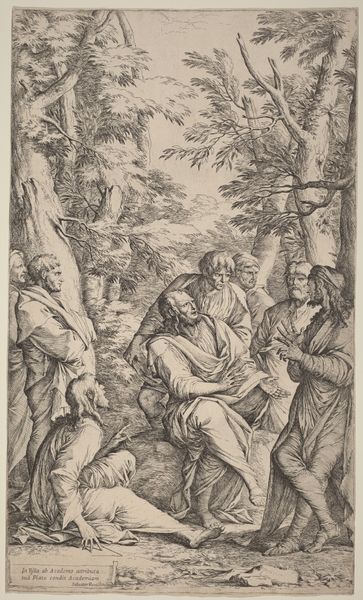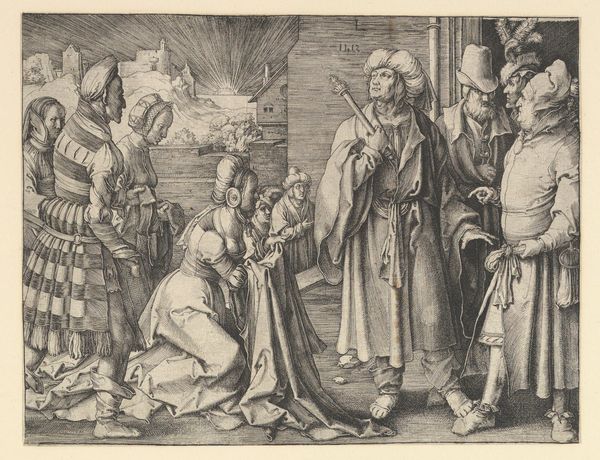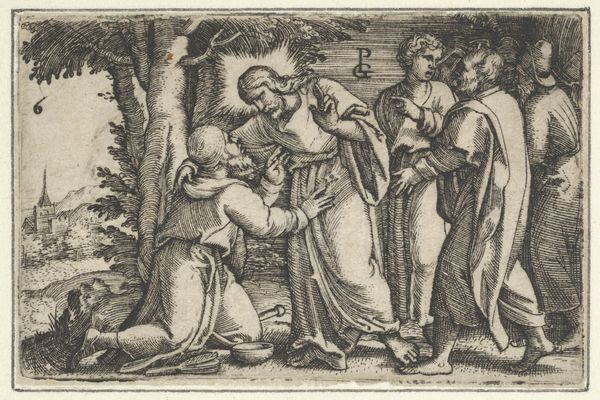
Dimensions: height 39 mm, width 59 mm
Copyright: Rijks Museum: Open Domain
Georg Pencz made this tiny print, "Christus onderwijst de discipelen", sometime around the mid-16th century using an engraving technique. Look closely, and you’ll see how the image is made of thousands of tiny lines cut into a copper plate with a tool called a burin. The ink sits in these lines, and when the plate is pressed onto paper, the image is transferred. Think of it as a very early version of mass production. Pencz wasn’t just an artist, he was a skilled craftsman. The act of engraving demanded precision and control, almost like a form of meditative labor. In Pencz's time, printmaking allowed for the wide distribution of images and ideas. By understanding its method, we can appreciate its function within broader cultural and economic systems. Ultimately, this print challenges the conventional hierarchy between art and craft. The meaning of the image is inseparable from the means of its production.
Comments
No comments
Be the first to comment and join the conversation on the ultimate creative platform.
